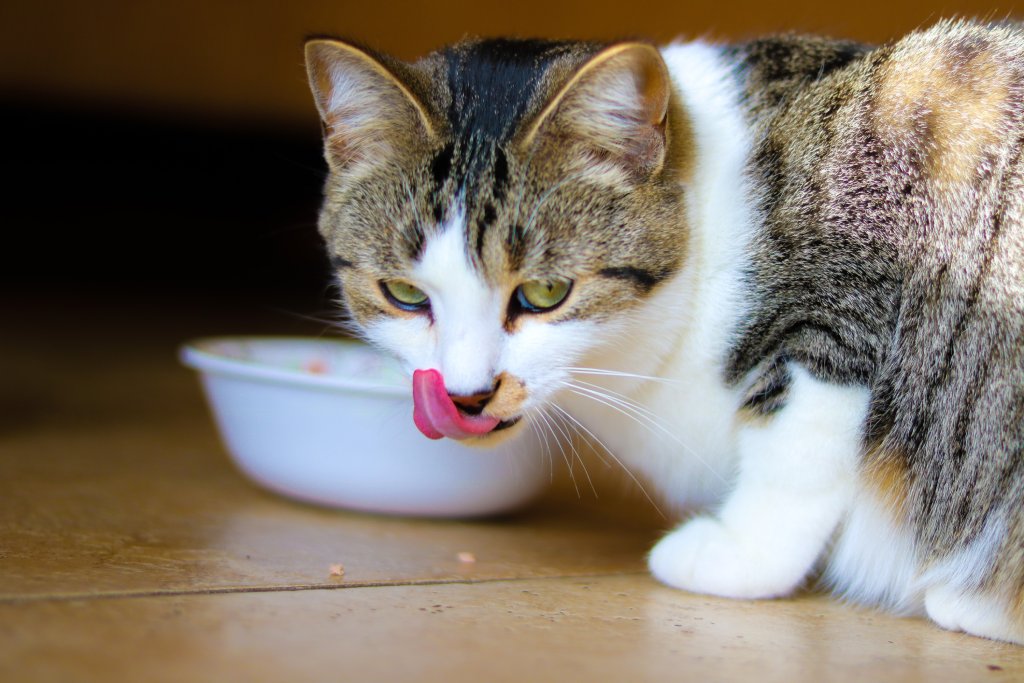
Trying to feed your finicky feline can be very frustrating for you and your furry friend. Most animals, including dogs, will eat just about anything, even if it isn’t food! Understanding why some cats can be so selective can help take the anxiety out of mealtime and lead to a happier, healthier household.
Cats are carnivores and eat only meat. Although dogs have evolved to become omnivores, eating plants and meat, cats were domesticated more recently than dogs, only about 9000 years ago, and remain strict carnivores.
Nature has given cats three primary features that ensure they remain firmly in the carnivore camp, even today.
Cats have long, sharp claws and canine teeth with small incisors and molars ideal for hunting prey and stripping meat from bones. They also have very short gastrointestinal tracts designed to digest meat quickly.
Cats are used to hunting often throughout the day, eating small, frequent meals. They have very high dietary protein and amino acid requirements.
Because cats lack certain enzymes, they need to acquire specific nutrients through dietary animal sources, including Vitamin A, niacin, taurine and arachidonic acid.
A critical factor that will affect your cat’s appetite is the palatability of its diet; in other words, how appetizing it perceives its food to be. Studies have shown that cats will choose a more appealing diet over a more nutritious or balanced one, the same way people favour fatty foods that taste great even when they’re not good for us. Cats generally choose their food using five criteria:
1) Taste
2) Odour
The next three factors are very individual but likely play a role in your cat’s food preferences:
3) Shape – Many cats like star-shaped kibbles, but some prefer round kibbles; to some cats, the kibble’s shape is irrelevant.
4) Texture – The preference for dry food versus wet food often comes down to texture. Some kitties like the crunch factor and others don't care.
5) Mouthfeel – Mouthfeel is the sensation of food in the cat’s mouth, including whether or not it causes discomfort or pain. Older cats with dental disease that are used to eating dry food will often appreciate you adding warm water to their dry to improve the mouthfeel on their sensitive teeth.
Learning which shape, texture and mouthfeel your cat prefers is simply a matter of trial and error.
You can learn how to help make your feline's food more palatable by understanding three things about your cat:
1) Understand the animal
A cat's way of life and prior dietary experiences play a role in its food preferences. For example, if you fed your cat dry food from seven to 23 months of age, it may be less likely to appreciate a switch to canned food later in life.
Your cat’s age is also a factor, as the receptors for smell and taste decline over time. Older cats may need encouragement to make their foods more palatable as they approach their senior years.
Finally, cats will either prefer a novel food ("neophilia") after you’ve fed them a single fare for a long time or reject it ("neophobia”). We see food rejection more often when a cat is under stress (emotional, environmental or physiological). It’s always a good idea to introduce new foods under favourable circumstances.
A fascinating fact I have seen in my practice is the concept of "learned food taste aversion." If I say the word "tequila," many of you may already understand where I am going with this as you recall a particular moment of over-indulgence in your youth that renders you tequila-adverse even today.
If introduced to a new food when feeling ill, cats may try it on Day One and then never touch it again. They associate the taste of the novel food with how sick they feel at that moment, and that aversion can be long-term. I made that mistake once in my practice when I fed my feline patient a prescription renal diet after diagnosing them with chronic kidney disease. I knew the diet would help their kidneys but forgot that they were in unfamiliar surroundings and not feeling well. As you might expect, the poor cat rejected the diet outright. Only introduce new diets or treats when cats are comfortable in their environment and feeling fine.
2) Understand the Signs
Watch your cat before and while it eats. A promising sign that your cat likes what you’ve served is when it paws or bites at its food. A cat enjoying what it’s eating will often have "half-closed eyes" and may lick its nose, protrude its tongue or smack its lips. If it doesn’t like what you’re offering, it may switch its tail back and forth or simply sit and groom, looking quite unimpressed.
3) Understand the Nutritional Considerations
Perhaps my best tip for feeding your cats is to remember that they aren't omnivores like us and have many different preferences and needs regarding diet. Your veterinarian can help you choose which foods and additives are best for your cat's situation. Finally, contact your veterinarian immediately if your cat goes a full day without eating. It is not something you should ignore.
If you’re interested in diving deeper into all things related to pet wellness and behaviour, make sure you subscribe to my podcast!
